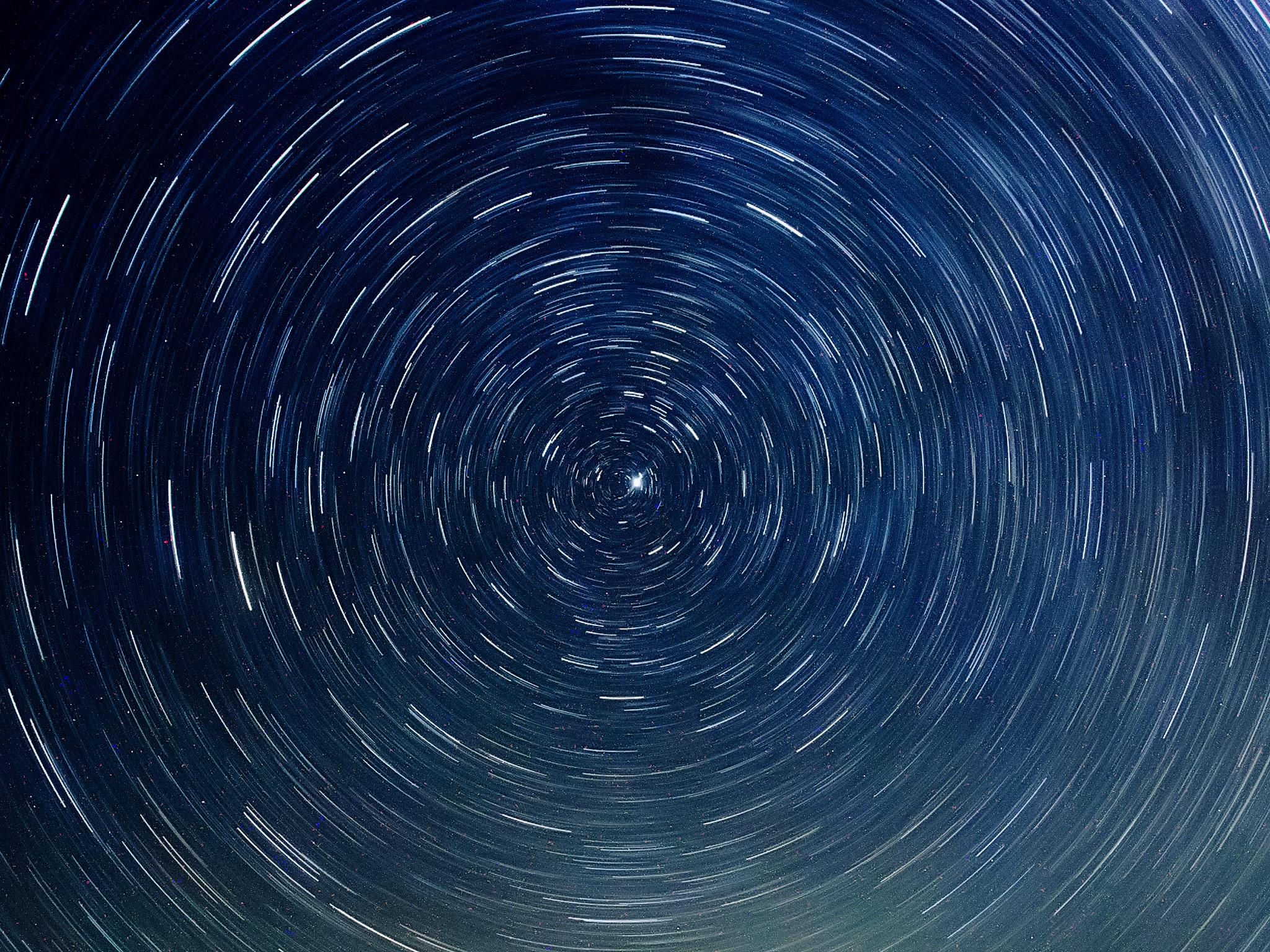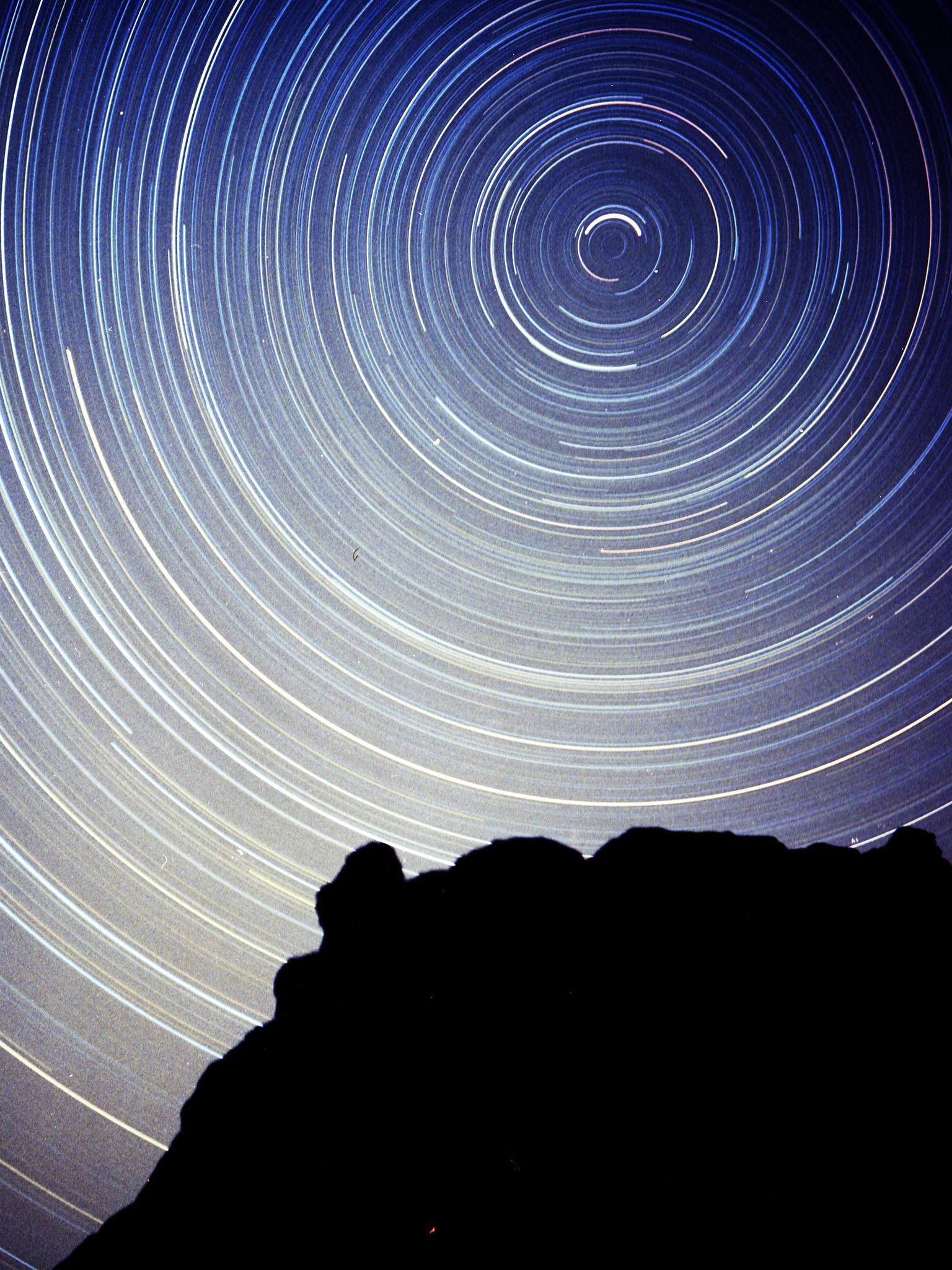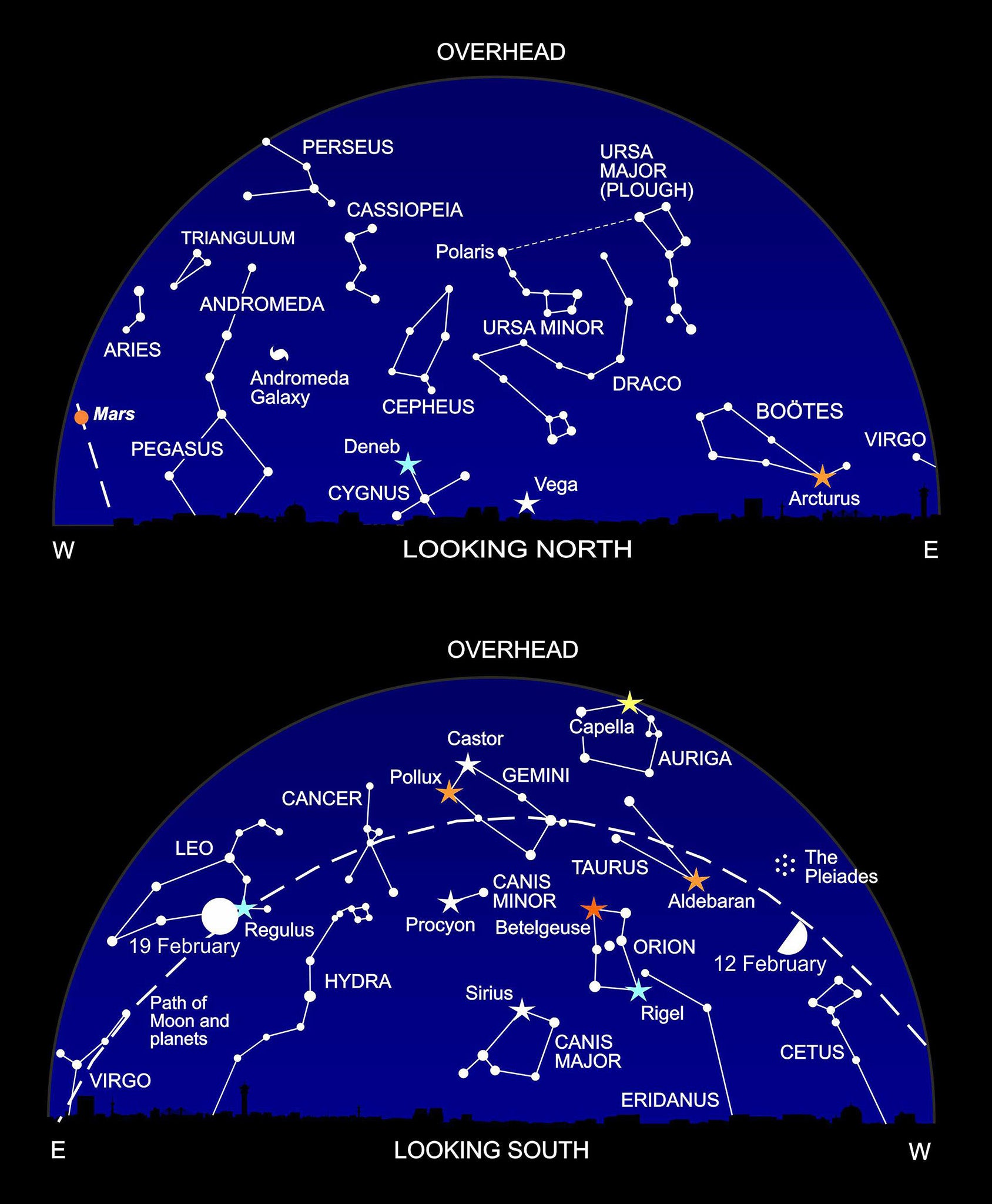Stargazing February: How to catch the Pole Star and the marvellous trail around it
This month, take some time to appreciate Polaris, even if it's not as bright as you think. Heather Couper and Nigel Henbest are your guides

Most people can find the Pole Star, Polaris. Locate the Plough; home in on the last two stars of its “bowl”; extend the line (take a look at our starchart) – and you’ll hit Polaris.
Many people think that Polaris must be the brightest star in the sky. But – despite its fame – it’s a star of very average brightness. Compare it with the stars of the Plough, and you’d never notice the difference.
Polaris lies almost directly above Earth’s North Pole; consequently, we spin “underneath” it. The star hardly moves in the sky, marking the point of due north. All the other stars rotate around it: the long exposure image (below) shows the trailed images of stars wheeling around Polaris.
It goes without saying that Polaris has long been an essential tool for navigation. Measure the altitude of the Pole Star, and you have your latitude. From Britain, it sits about 51.5 degrees north in the sky. Travel to the Mediterranean, and you’ll notice that Polaris lies much lower in the heavens.
But look at the star trails carefully. Even the Pole Star shows a slight trail. That’s because it’s not completely aligned with the North Pole. You’ll have to wait until 24 March 2100, when the alignment is at its closest.
Supposing you trek down to the southern hemisphere, and want to look for a southern pole star? Unfortunately, there really isn’t one.
The nearest you’ll get to it is a faint, obscure star called Sigma Octantis, which doesn’t even line up very well with the South Pole. But it does have the honour of being the dimmest star featured on any country’s flag (Brazil’s).
What kind of star is Polaris? It lies around 433 light years away; relatively close on the celestial scale. Like our sun, it’s yellowish in colour, but more than five times heavier. Astronomers classify stars like this as “supergiants”.
Growing so big – and approaching the end of their lives – supergiants are unstable. Their gas layers wobble in and out, causing the star to change in brightness.

Polaris varies on a timescale of about four days, although you would hardly notice it.
The Pole Star has two attendant stars; one very close in and another further out, discovered by William Herschel (of Uranus fame) in 1779. You can see this one through a modest telescope.
Polaris won’t be our northern beacon forever. The Earth’s rotation axis in space is wobbly – like a child’s falling spinning top – and it points in different directions. Over a 26,000-year period (known as precession), the Earth’s North Pole sweeps out a circle in the sky, pointing to different stars (or none at all).
Our advice? Wait until AD13700. Then you’ll get a truly fantastic pole star – in the shape of brilliant Vega (which you can spot this month low on the northern horizon).
What’s up?
These dark February nights are studded with scintillating jewels – the most brilliant stars in the heavens. Find your way around by starting with the figure of Orion in the south: bright orange-red Betelgeuse marks one of the hunter’s shoulders, and blue-white Rigel his knee, with three stars in between delineating his belt.
To the lower left, Orion’s Belt points towards the brightest star of all: Sirius, the Dog Star – fittingly, in the constellation of Canis Major (the Great Dog). Above Sirius lies a lesser canine, the star Procyon in Canis Minor (the Little Dog). Higher again, the matching stars Castor and Pollux are the leading lights of Gemini (the Twins).

Almost overhead, you’ll spot Capella: the star’s name means “little she-goat” – but for some reason she resides in the constellation of the Charioteer (Auriga).
And if you follow Orion’s Belt to the upper right, you come across Aldebaran – marking the eye of Taurus (the Bull) – and then the lovely star cluster of the Pleiades, better known as the Seven Sisters.
Further to the right, the bright orange “star” is the planet Mars, gradually fading as the Earth pulls away. Towards the end of February, you may catch Mercury very low in the west just as the sky grows dark.
There’s more planetary action in the morning sky, where Venus reigns supreme as the glorious Morning Star. The second brightest planet, giant Jupiter, lies to its right. As the month progresses, you’ll notice Saturn gradually climbing upwards, and passing below Venus on the morning of 18 February.
The full moon on 19 February is a “supermoon”. Unlike much of the online media, we don’t go overboard on supermoons. A couple of years back, one online magazine advised its readers not to go outside because the supermoon would be so brilliant it would damage their eyesight!
We have a supermoon when the full moon happens to occur when our neighbour is at the closest point of its orbit. That’s not a big change in distance, so there isn’t a huge difference in its illumination: this month, the supermoon will be only 30 per cent brighter than the faintest full moon. But you might like to celebrate a little: this supermoon – lying just 356,846 km away – is the closest and brightest full moon we’ll experience for the next eight years.
Diary
12 February, 10.26pm: moon at first quarter
13/14 February: moon occults the Hyades
17/18 February: moon skims Praesepe
18 February: Venus near Saturn (am)
19 February, 3.53pm: full moon (supermoon) near Regulus
22 February: moon near Spica
26 February, 11.28am: moon at last quarter
27 February: moon near Jupiter (am); Mercury at greatest elongation east
28 February: moon near Jupiter (am)
Fully illustrated, ‘The Universe Explained’ by Heather Couper and Nigel Henbest is packed with 185 of the questions that people ask about the Cosmos, from the existence of alien life to what happened before the Big Bang
And Heather and Nigel’s ‘Philip’s 2019 Stargazing’ reveals everything that’s going on in the sky this year
Join our commenting forum
Join thought-provoking conversations, follow other Independent readers and see their replies
Comments
Bookmark popover
Removed from bookmarks